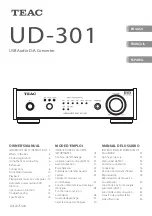
DYNAVERT
®
L05
Annex
4BS0516DE-EN/011
Stand/ issue: 25.07.03
59
V(m/s)
t (s)
It is clear from the above that the switch-off points, irrespective whether determined by switches in the shaft
or by a digital shaft information system via control software, are only for preparing the stoppage at the next
landing. From this point, the inverter calculates online the remaining still-to-be-run distance to the destination
landing and it initiates the deceleration automatically (in accordance with a
time optimized travel
and
observation of travel curve data!).
Switch-off points and intermediate speed:
In most applications there is only one single operating speed for normal travel required.
At the Dynavert
®
L05 this is speed
v3
. With this speed the lift runs also in case of a floor-to-floor travel.
If in case of a floor-to-floor travel the distances for acceleration and deceleration are longer than the
floor-to-floor distance, the Dynavert
®
L05 activates automatically a so-called “ogival run“ and does not
accelerate to reach operating speed
v3
. An ogival run occurs, for example, when the switch-off points
(braking vanes) between 2 landings lie already within the acceleration phase of the lift.
If the braking distance however is longer than the floor-to-floor distance, the control has to activate
intermediate speed
v1
and there is another switch-off point (braking vane) required for this mode.
If the braking distance is longer than 2 floor-to-floor distances, speed
v2
must be activated. In such a
case a control with a digital shaft information system should be used.
DCP- interface:
With an appropriate lift control the whole handling should be possible by means of the control display.
Moreover, the triggering signals can be transmitted via serial interface to a DCP-protokoll.
This, however, must be clarified before with the control manufacturer as the control must be configured
accordingly in the factory.
Braking vane
Shall stop:
Switch-off point as a position
reference for the landing
defined by the control
Min.braking distance:
Actual, position-controlled initiation
of deceleration by the inverter
Inverter: parameterised
positioning distance (levelling distance)
Setting “0“ in case of direct approach
Stop switch
Stoppage point for
the levelling as a
position reference








































